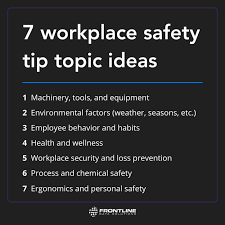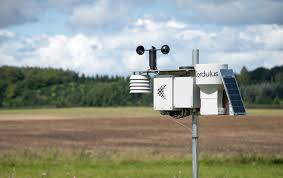The Importance of Flood Protection Barriers in Mitigating Water Damage
Flood protection barriers play a crucial role in safeguarding communities and properties from the devastating effects of flooding. These barriers are designed to prevent or minimize water intrusion, thereby reducing the risk of damage to buildings, infrastructure, and natural environments.
Types of Flood Protection Barriers
There are various types of flood protection barriers available, each tailored to specific needs and scenarios:
- Sandbags: Traditional yet effective, sandbags can be quickly deployed to create temporary barriers against rising waters.
- Flood Walls: Permanent structures made of concrete or metal that provide long-term protection for areas prone to flooding.
- Levees: Earthen embankments built along riverbanks or coastlines to prevent water overflow during heavy rainfall or storm surges.
- Flood Gates: Mechanized barriers that can be closed to block water flow during flood events and opened during normal conditions.
Benefits of Flood Protection Barriers
The installation of flood protection barriers offers several key benefits:
- Risk Reduction: By creating physical barriers against floodwaters, these structures help reduce the likelihood of property damage and loss.
- Enhanced Safety: Protecting lives is a top priority during flooding events, and flood protection barriers contribute to keeping communities safe.
- Economic Savings: The cost of repairing flood damage far exceeds the investment in flood protection measures, making barriers a cost-effective solution in the long run.
Challenges and Considerations
While flood protection barriers are effective tools in mitigating water damage, there are challenges and considerations to keep in mind:
- Maintenance: Regular inspection and maintenance are essential to ensure that barriers remain functional and reliable over time.
- Sustainability: Balancing the need for flood protection with environmental considerations is crucial to minimize negative impacts on ecosystems.
- Evaluation: Proper assessment of flood risks and vulnerabilities is necessary to determine the most suitable type of barrier for a specific location.
In Conclusion
Flood protection barriers serve as vital defense mechanisms against the destructive forces of flooding. By investing in these structures and implementing comprehensive flood management strategies, communities can better prepare for and respond to potential water-related disasters, ultimately enhancing resilience and safeguarding lives and property.
Top 7 Benefits of Flood Protection Barriers: Safeguarding Lives, Property, and Peace of Mind
- Effective in reducing property damage during flooding events.
- Help safeguard lives by providing physical barriers against rising waters.
- Cost-effective long-term solution compared to the expenses of flood damage repair.
- Versatile options available, such as sandbags, flood walls, levees, and flood gates.
- Can be quickly deployed in emergency situations to mitigate immediate flood risks.
- Contribute to enhancing community resilience and disaster preparedness.
- Provide peace of mind for residents living in flood-prone areas.
7 Drawbacks of Flood Protection Barriers: Costs, Environmental Impact, and More
- Costly to install and maintain, especially for large-scale projects.
- May alter natural landscapes and habitats, impacting ecosystems.
- Limited effectiveness against extreme or prolonged flooding events.
- Can create a false sense of security, leading to inadequate evacuation planning.
- Require regular inspection and upkeep to ensure proper functionality.
- Installation process may disrupt local communities and traffic flow.
- Certain types of barriers may not be suitable for all geographical locations or soil conditions.
Effective in reducing property damage during flooding events.
Flood protection barriers are highly effective in reducing property damage during flooding events by creating physical barriers that help prevent or minimize water intrusion. These barriers act as a first line of defense, diverting or blocking floodwaters from reaching buildings and infrastructure, thus safeguarding properties from costly damages such as structural deterioration, mold growth, and loss of personal belongings. By investing in flood protection barriers, communities can significantly mitigate the impact of flooding on homes and businesses, ultimately saving resources and enhancing overall resilience in the face of natural disasters.
Help safeguard lives by providing physical barriers against rising waters.
Flood protection barriers play a critical role in safeguarding lives by providing essential physical barriers against rising waters. These barriers act as a first line of defense during flood events, helping to prevent water intrusion into communities and structures. By effectively blocking or redirecting floodwaters, these protective measures reduce the risk of harm to individuals and emergency responders, ultimately enhancing safety and saving lives. Investing in flood protection barriers is a proactive step towards mitigating the devastating impacts of flooding and ensuring the well-being of vulnerable populations in at-risk areas.
Cost-effective long-term solution compared to the expenses of flood damage repair.
Flood protection barriers offer a cost-effective long-term solution compared to the substantial expenses associated with repairing flood damage. By investing in flood protection measures such as barriers, communities and property owners can significantly reduce the financial burden of post-flood recovery efforts. The initial cost of installing and maintaining flood protection barriers is outweighed by the potential savings in terms of property damage, infrastructure repair, and overall economic impact caused by flooding events. This proactive approach not only helps mitigate financial losses but also contributes to building resilience against future flood risks, making it a wise investment in safeguarding against water-related disasters.
Versatile options available, such as sandbags, flood walls, levees, and flood gates.
One significant advantage of flood protection barriers is the wide range of versatile options available to address varying flood risks and scenarios. From the quick deployment of sandbags for temporary protection to the long-term security provided by flood walls, levees, and flood gates, there are solutions tailored to different needs and environments. This diversity allows communities and authorities to choose the most suitable barrier type based on factors such as location, severity of flooding, and budget constraints, ensuring effective flood mitigation strategies are in place to protect lives and property.
Can be quickly deployed in emergency situations to mitigate immediate flood risks.
Flood protection barriers offer the advantage of being quickly deployable in emergency situations to mitigate immediate flood risks. This capability allows for swift response and action when facing sudden flooding events, providing crucial protection to communities and properties at a moment’s notice. By having these barriers readily available for deployment, authorities and residents can act promptly to minimize the impact of rising waters and enhance overall safety during times of crisis.
Contribute to enhancing community resilience and disaster preparedness.
Flood protection barriers play a significant role in enhancing community resilience and disaster preparedness by providing a proactive defense against flooding events. By implementing these barriers, communities can better withstand and recover from the impacts of floods, reducing the overall vulnerability of residents and infrastructure. This proactive approach not only minimizes potential damage but also fosters a culture of preparedness, ensuring that communities are better equipped to respond effectively to future flood threats. Ultimately, flood protection barriers contribute to building stronger and more resilient communities capable of withstanding natural disasters and safeguarding the well-being of their residents.
Provide peace of mind for residents living in flood-prone areas.
Flood protection barriers offer a significant pro by providing peace of mind for residents residing in flood-prone areas. Knowing that these protective structures are in place to help mitigate the risks of flooding can alleviate the constant worry and anxiety that often accompanies living in such vulnerable locations. Residents can feel more secure and confident in their safety, property protection, and overall well-being, allowing them to focus on other aspects of their lives without the constant fear of potential flood damage looming over them.
Costly to install and maintain, especially for large-scale projects.
One significant drawback of flood protection barriers is their high cost of installation and maintenance, particularly for large-scale projects. The initial investment required to set up robust flood barriers can be substantial, involving expenses related to materials, labor, and engineering expertise. Additionally, ongoing maintenance costs can accumulate over time, as regular inspections, repairs, and upgrades are necessary to ensure the effectiveness of the barriers. This financial burden may pose challenges for communities or organizations with limited resources, potentially hindering their ability to implement comprehensive flood protection measures on a large scale.
May alter natural landscapes and habitats, impacting ecosystems.
One significant drawback of flood protection barriers is their potential to alter natural landscapes and habitats, leading to adverse impacts on ecosystems. The construction of these barriers may disrupt the natural flow of water, affecting the balance of local ecosystems and habitats. Changes in water levels and patterns can result in habitat loss for wildlife, disruption of migration routes, and alterations to plant communities. It is essential to carefully consider the environmental consequences of implementing flood protection barriers and explore sustainable solutions that minimize harm to ecosystems while still effectively mitigating flood risks.
Limited effectiveness against extreme or prolonged flooding events.
One significant drawback of flood protection barriers is their limited effectiveness against extreme or prolonged flooding events. In situations where water levels rise rapidly or remain high for an extended period, traditional barriers such as sandbags or levees may be overwhelmed, leading to breaches and widespread inundation. The sheer force and volume of water during extreme flooding can challenge the capacity of these barriers, highlighting the need for supplementary measures and comprehensive flood management strategies to address the heightened risks posed by severe weather events.
Can create a false sense of security, leading to inadequate evacuation planning.
One significant drawback of flood protection barriers is that they can create a false sense of security among residents and authorities, potentially resulting in inadequate evacuation planning. Relying solely on barriers to mitigate flood risks may lead to complacency and a lack of preparedness for worst-case scenarios. In such situations, individuals may delay or ignore evacuation orders, assuming that the barriers alone will provide sufficient protection. This misconception can be dangerous, as effective evacuation planning is essential for ensuring the safety of communities during severe flooding events. It is crucial to emphasize the importance of comprehensive flood preparedness strategies that include both physical barriers and proactive evacuation measures to minimize risks and protect lives.
Require regular inspection and upkeep to ensure proper functionality.
One significant drawback of flood protection barriers is the necessity for regular inspection and upkeep to maintain their proper functionality. This ongoing maintenance requirement can be time-consuming and costly for communities and property owners. Failure to conduct timely inspections or address maintenance issues promptly could compromise the effectiveness of the barriers, leaving areas vulnerable to flooding and increasing the risk of damage. The need for consistent monitoring and upkeep adds an additional layer of responsibility for those relying on flood protection barriers to mitigate water damage, highlighting the importance of proactive maintenance practices in ensuring their long-term effectiveness.
Installation process may disrupt local communities and traffic flow.
The installation process of flood protection barriers may pose a significant con as it has the potential to disrupt local communities and traffic flow. Construction activities, heavy machinery movement, and road closures required for barrier installation can cause inconvenience to residents, businesses, and commuters in the affected areas. The temporary disturbances and changes in traffic patterns during the installation phase may lead to delays, detours, and accessibility challenges, impacting daily routines and local economies. Careful planning, coordination with stakeholders, and effective communication strategies are essential to mitigate these disruptions and minimize the negative impact on the community during the implementation of flood protection measures.
Certain types of barriers may not be suitable for all geographical locations or soil conditions.
Certain types of flood protection barriers may not be suitable for all geographical locations or soil conditions, posing a significant con in flood mitigation efforts. For instance, levees require stable soil and proper engineering to effectively withstand floodwaters, making them unsuitable for areas with weak or erodible soils. Similarly, flood walls may not be feasible in regions with high groundwater levels that could compromise their structural integrity. It is crucial to carefully assess the geological and environmental factors of a location before implementing flood protection barriers to ensure their effectiveness and minimize potential risks associated with unsuitable barrier types.




